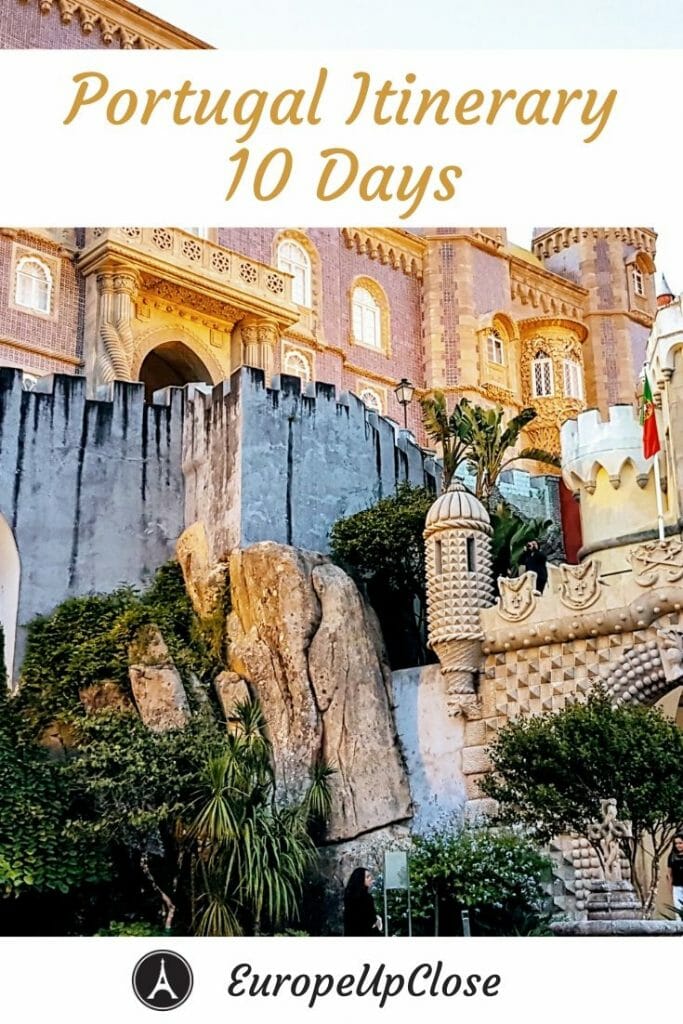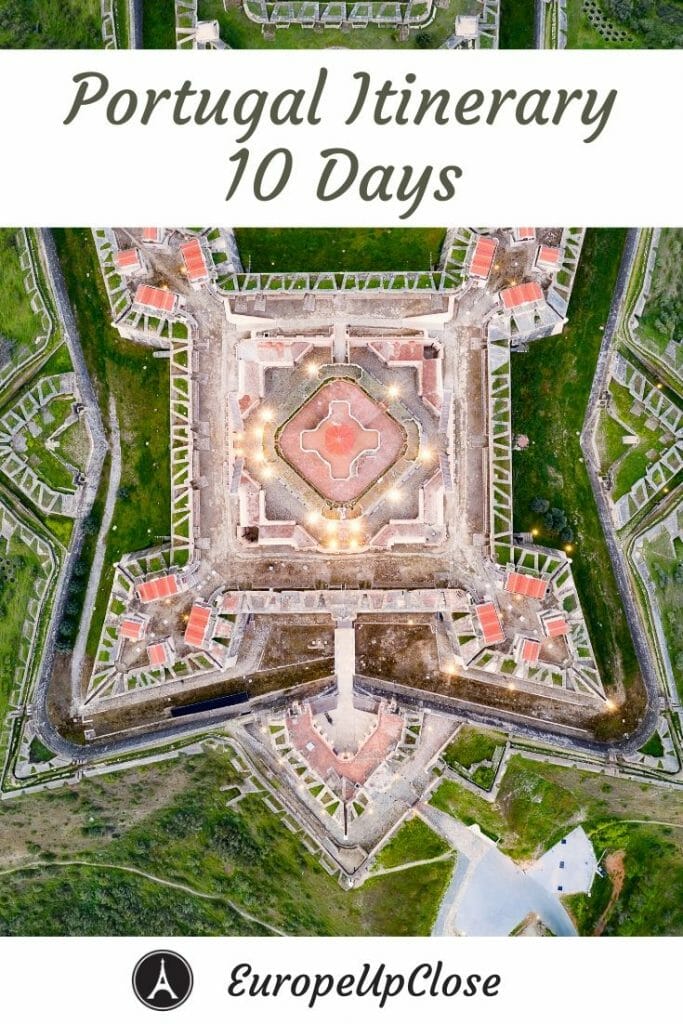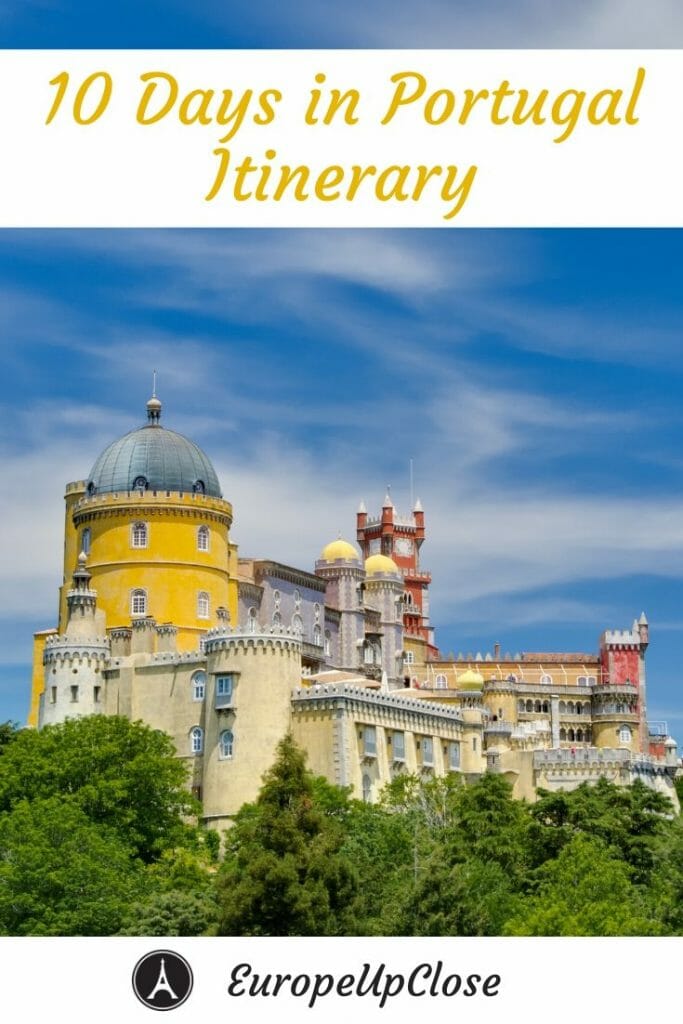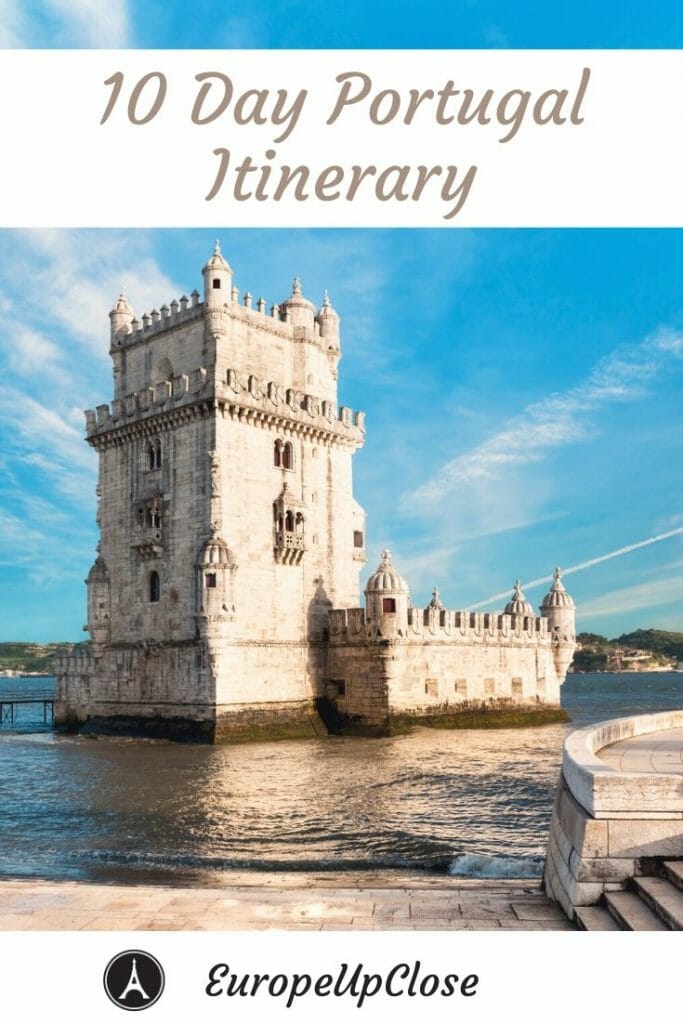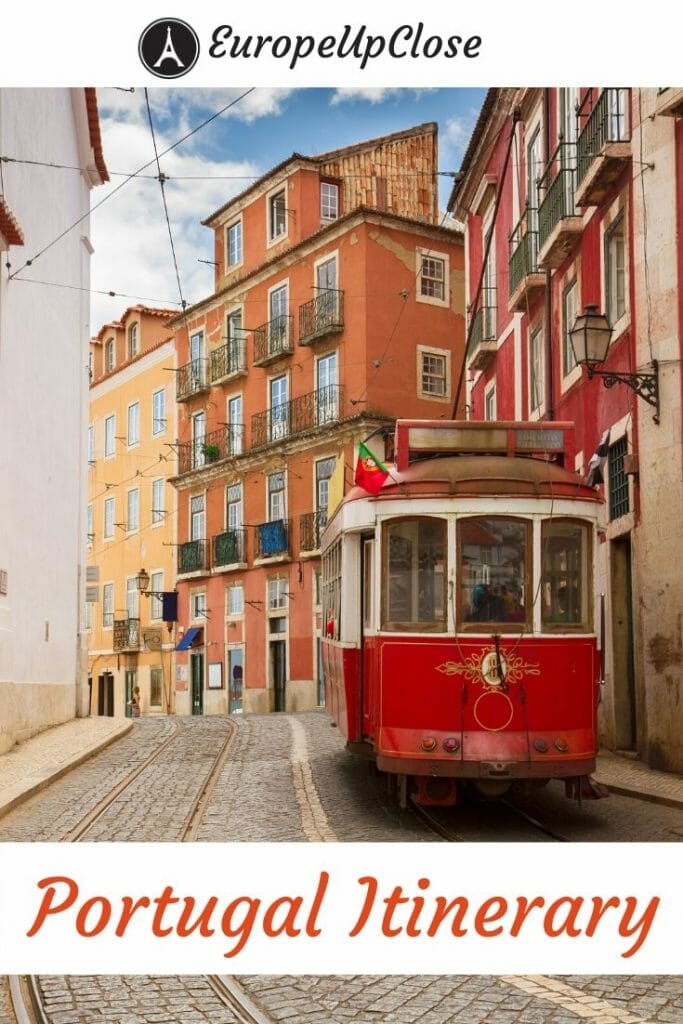10 Days in Portugal Itinerary
Portugal is a country of culture, heritage, and natural beauty. This Portugal itinerary will take you to explore some of the best beaches, the world heritage sites, and the main cities! As it’s highly probable that you’ll enter Portugal in Lisbon we will start and finish your 10 days in Portugal there.
One of the things you need to know before traveling to Portugal is that you’ll need to rent a car, at least partially. It’s possible to reach most of these places using public transportation, but with a car, it’s much faster and much more comfortable.
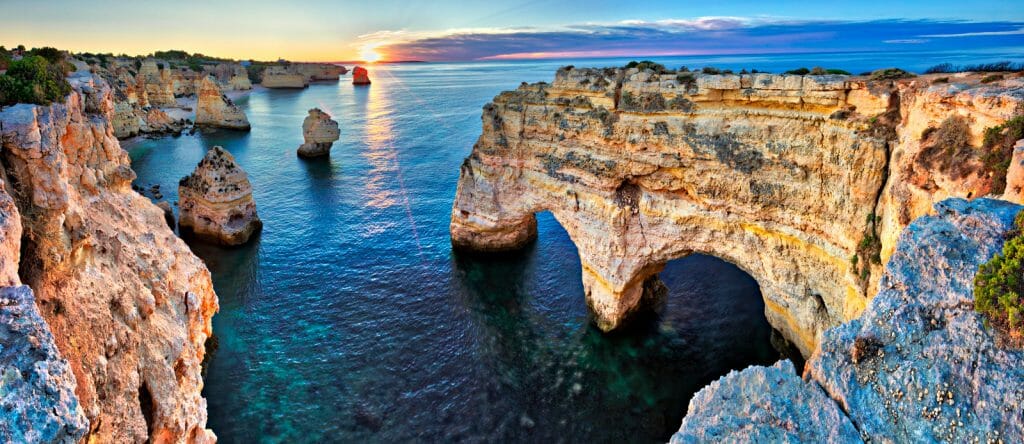
We believe that 10 days is the minimum time you need to get to know and see some of the most beautiful places in Portugal. Yet, you need to understand that these 10 days in Portugal will only scratch the surface of all the things you can do in Portugal (and we are excluding Madeira and Azores Archipelagos).
So, without further delays, let’s explore continental Portugal in 10 days!
Portugal Itinerary – 10 Days in Portugal
Day 1 Lisbon Downtown
Lisbon is the capital and main city in Portugal. You will probably arrive in Portugal in Lisbon, as it is the country’s main hub. In Lisbon, we highly suggest you stay in a hotel as close to downtown (Baixa) as possible. Baixa is where most of the attractions and best things to do in Lisbon are so that’s where we will start our itinerary.
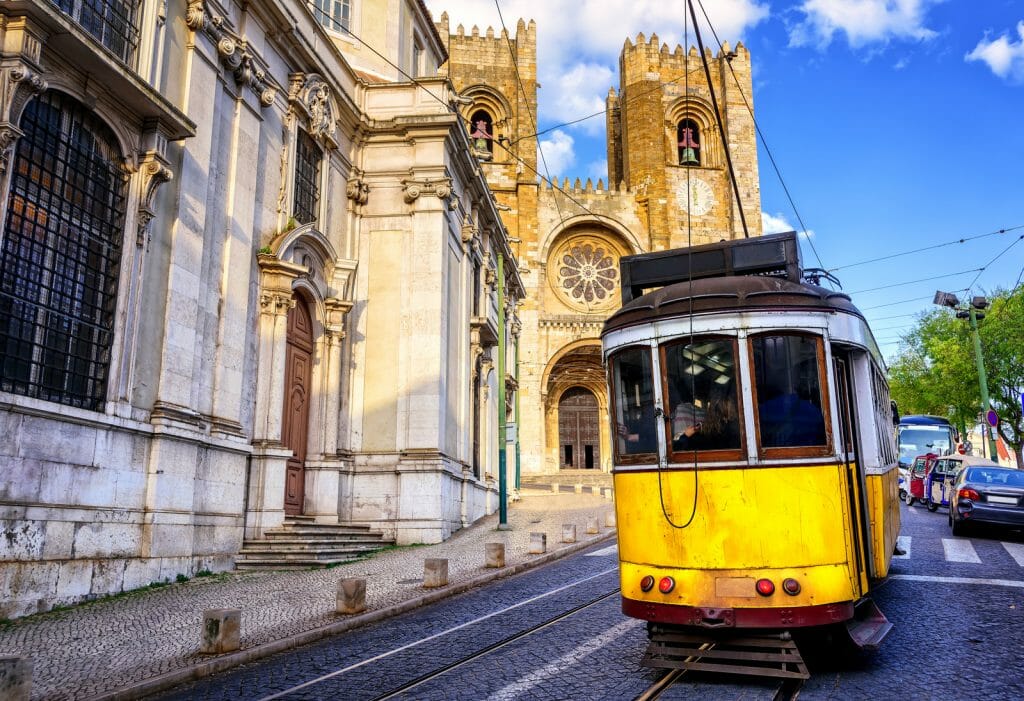
The good thing about starting in Lisbon is that you don’t need a car for the first few days. In fact, the car in Lisbon will be more of a hassle than a good thing. The area you’ll visit has bad traffic and very few parking spots.
On the other hand, using public transportation (metro and busses) or Uber to move around is easy and inexpensive. Furthermore, many attractions are very close to each other so you can simply walk there. If you plan to visit many attractions, the Lisboa Card can save you quite a bit of money. Read here if it is worth it for you: Lisboa Card
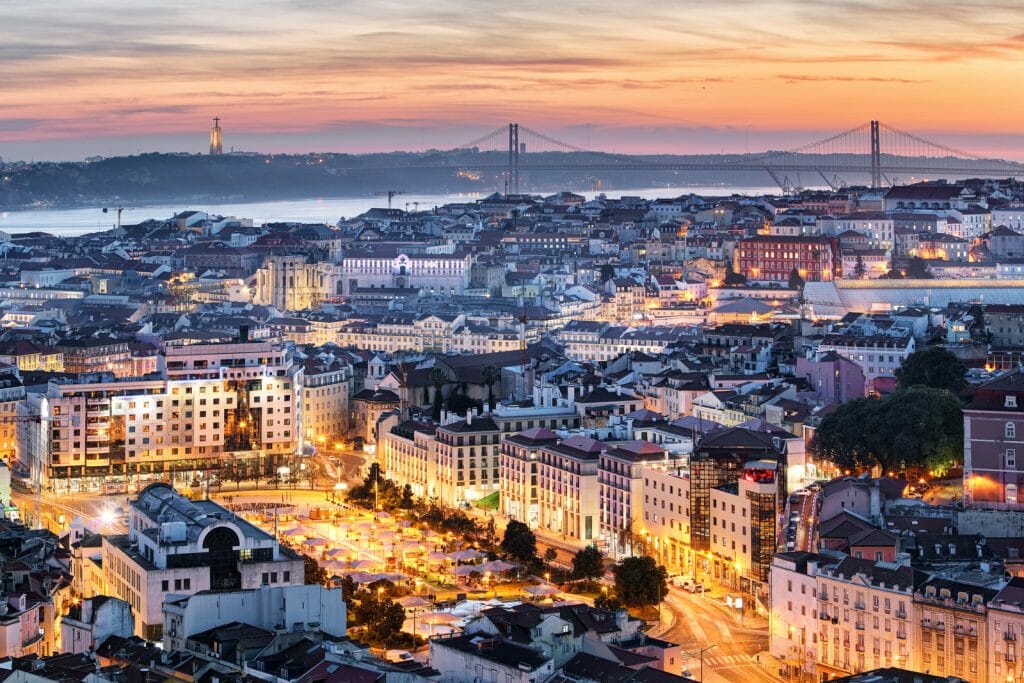
We recommend staying in a hotel in downtown Lisbon. Here are some of our recommendations for where to stay in Lisbon. On your first day you should explore the surrounding area, which is the heart of Lisbon. Some of the most important things to visit are:
Baixa Pombalina – it includes some of the most famous squares and streets in Lisbon like Praça do Comércio, Rua Augusta (and its wonderful arch), and Rossio.

Alfama and Mouraria – two of the oldest neighborhoods in Lisbon. They are different from the rest of the city as they still conserve original typical Muslim streets and organization. This area is full of bars and restaurants, so it’s a nice opportunity to have lunch or dinner. We strongly suggest visiting this area with a tour, to learn about their long and interesting history.
São Jorge Castle – The main castle in Lisbon is also one of its most popular landmarks. It also offers one of the best lookouts in the city.
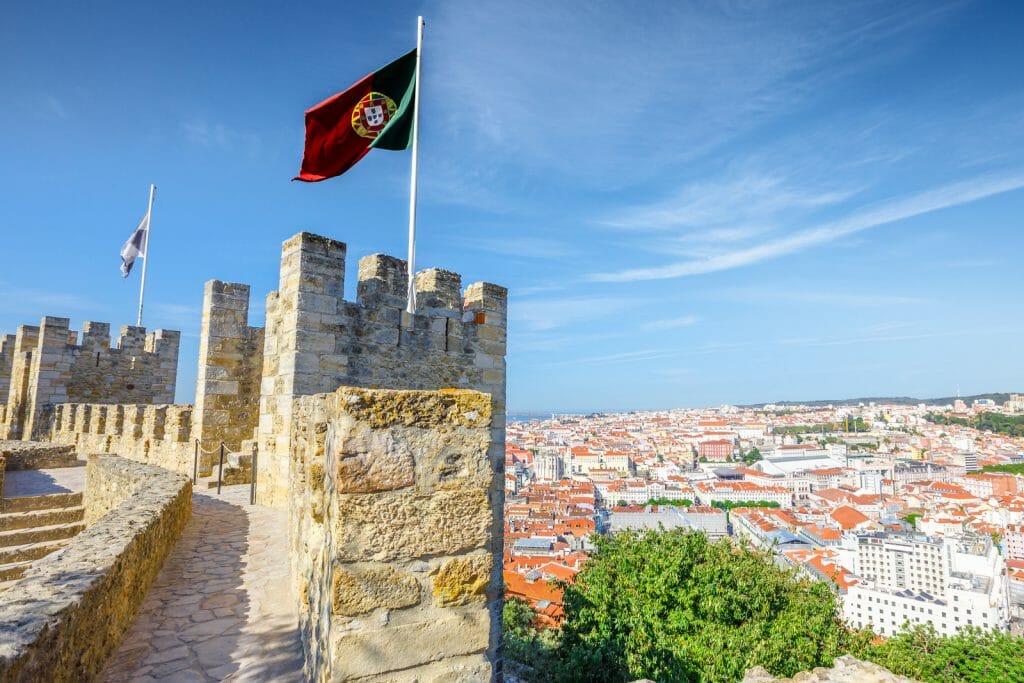
Carmo Convent Ruins – this convent and church were consumed by a fire after the 1755 earthquake. It was never rebuilt, but it’s ruins are beautiful and one of our favorite places in Lisbon.
Tram 28 (if it isn’t too crowded) – Riding the tram is one of Lisbon’s most popular attractions, so popular that it’s usually crowded. If you manage to enter, it’s a very fun way to see the city.
Day 2 Lisbon Belem
On the second day in Lisbon, we suggest you take the bus or uber to Belem. This area of the city has some of the most notorious city landmarks and it’s also home of Portugal’s most famous sweets and desserts.
Jeronimos Monastery – This 15th-century Monastery and UNESCO heritage site is possibly the most beautiful landmark in Lisbon. It’s the finest example of the Manueline style (Portuguese gothic).
Belem tower – easy to reach, as it’s next to the Monastery, Belem tower used to protect the city from possible attacks. Its extravagance reflects the power and richness of Portugal in those days.
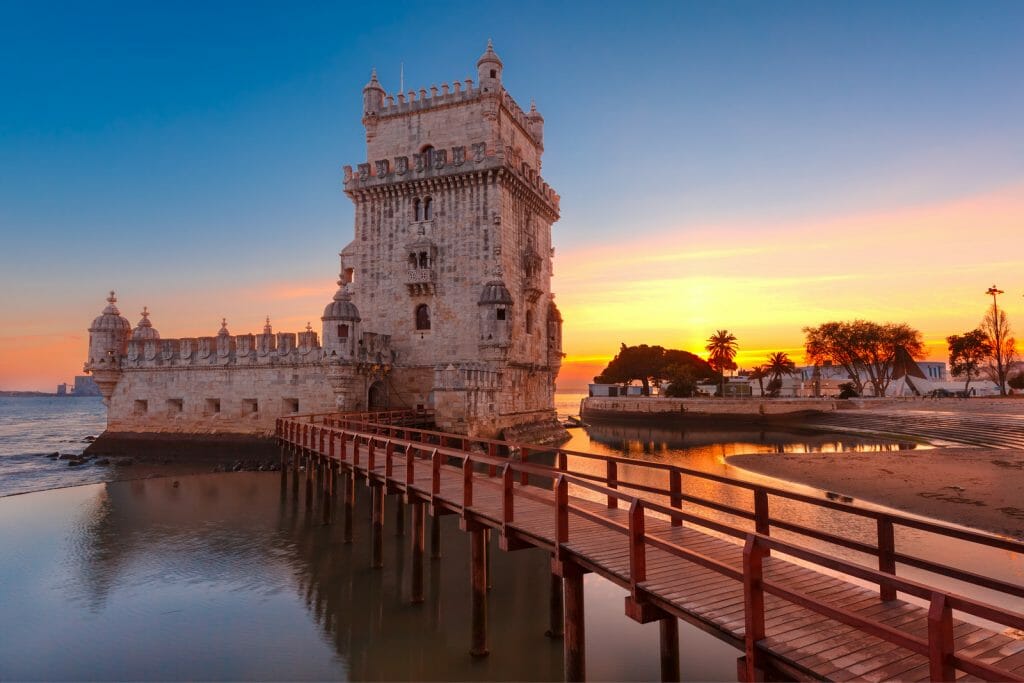
Monument to the discoveries – Symbolic landmark that looks like the Portuguese caravel with a Henry the Navigator commanding a legion of famous Portuguese people.
National Coach Museum – A unique museum with dozens of historic coaches, from the 16th to the 19th century. It’s one of our favorite museums in the country.
Pastel de Belem – The original pastry shop selling the Portuguese custard tart is located next to the Monastery. You won’t miss it, as it usually has long lines in front of it. If you are a foodie, signing up for a food tour in Lisbon is a great way to explore the city AND the culinary dishes of Portugal.

On either night (or both) you should go to Bairro Alto, the most famous spot in Lisbon for dinners and a night out. It’s also the neighborhood to go to if you want to experience a fado night. If you have more time, stay a few more days in Lisbon and add a day trip or two to explore the surrounding areas.
Day 3 Porto
Now it’s time to head to Porto, and we suggest you take the train. The trip is pleasant and takes less than 3 hours. You could rent the car in Lisbon, and drive but you won’t need it in Porto, so we strongly suggest you only rent a car after visiting Porto on day 5 of this itinerary.
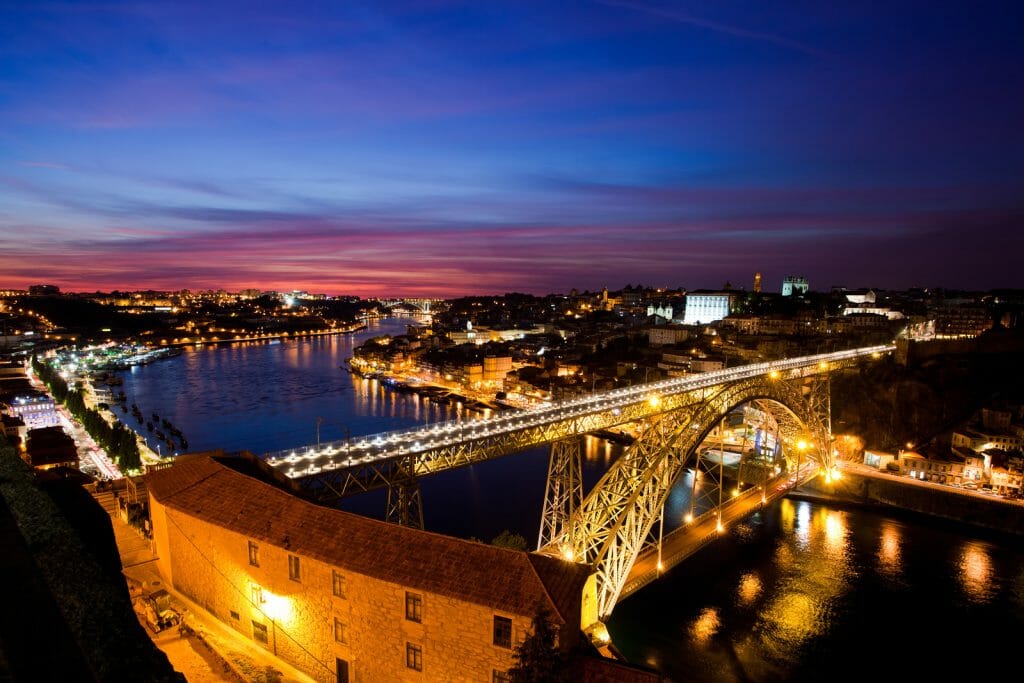
Despite being the second city in Portugal, Porto has a rather small historical center and you can reach every destination below on foot if you should book a hotel as central as possible.
In Porto, the most important attractions are:
S. Bento train station – if you come by train this is the first thing you’ll visit as it’s the main train station in central Porto. It’s a beautiful building decorated with several Portuguese tiles (azulejos) panels.
Aliados – Porto’s main square, surrounded by beautiful 19th-century buildings and the city hall.
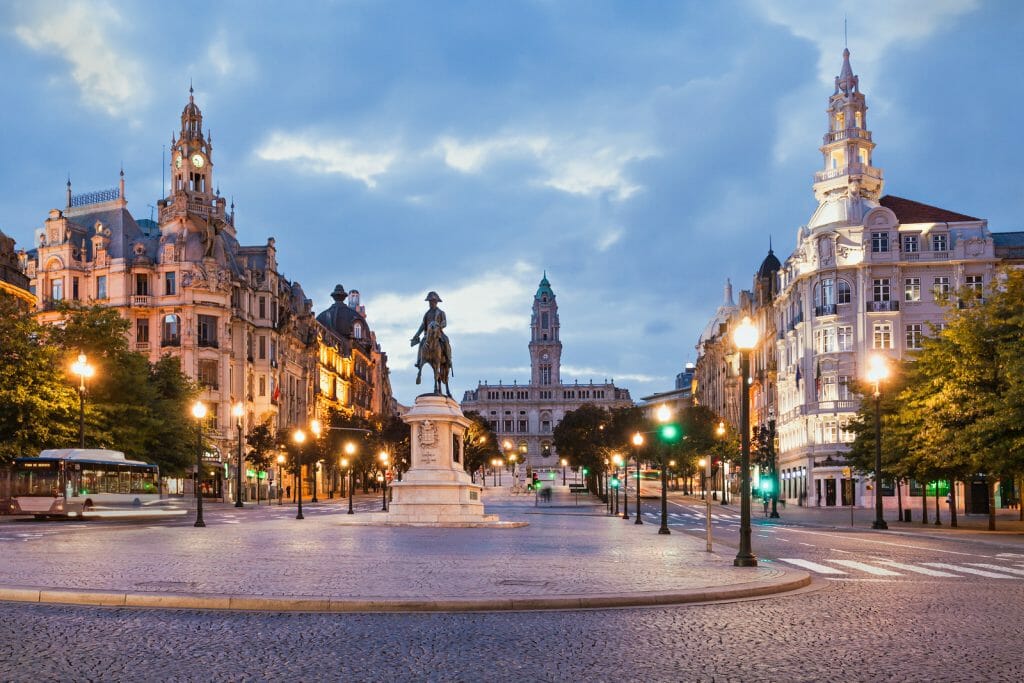
Clérigos tower and church – a major baroque building of the 18th century. You can climb to the top and have an amazing view of Porto.
Stock Exchange Palace – one of Porto’s finest attractions, but mostly due to the interior rather than the exterior. The Arabian room is considered a monument in itself.
Ribeira – Ribeira is the riverside neighborhood of Porto and it’s one of the perfect places to just wander around. It has wonderful small cobbled streets and alleys with traditional houses. You may also want to visit “Casa do Infante”, the house where Henry the navigator was born that now holds a nice Age of Discoveries Museum.

D. Luis Bridge – It’s a 19th-century bridge you can cross on foot and offers great views to either side of the River.
Some other places that you may want to include if you have time are the Cathedral of Porto, Carmo church, S. Francisco Church, Lello bookshop, and Serra do Pilar and the Port wine cellars both in Gaia.
Day 4 Douro Valley Tour
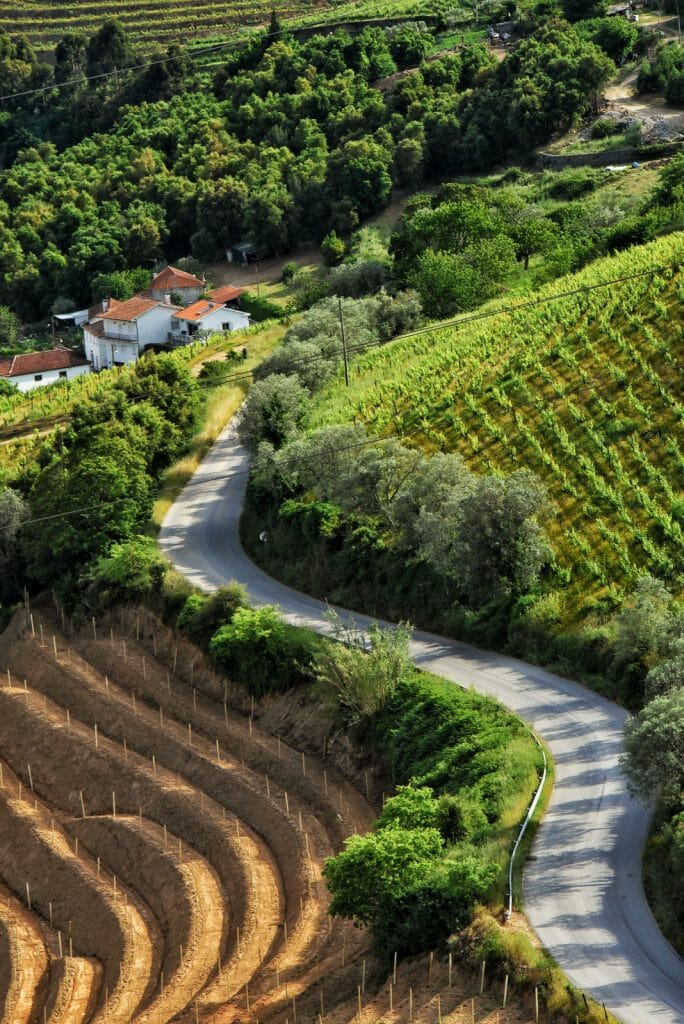
On day four of this 10-day itinerary, we suggest you visit the Douro Valley. You can visit the Douro valley by car, train or boat, but on this trip, we think the most relaxing option is to take a boat tour that will take you to some of the best places to enjoy this world heritage site.
The Douro Valley is considered one of the most beautiful wine regions in the world and possibly the best day trip from Porto. The tour will take you almost the full day, but in the end, you’ll have visited this wonderful scenery of terraces built over hundreds of years and the snaking Douro river snaking between the mountains.
As you probably didn’t have time to finish all the attractions we mentioned on day 3, you can use the rest of your day to rest, or maybe visit a few more!
Day 5 Coimbra and Nazareth
On the fifth day in Portugal, you will finally need a car, so it’s time to rent one. On this day we will head south, first to Coimbra and then to Nazaré and Alcobaça.

Coimbra is an important city in central Portugal, but its most important attraction is undoubtedly the university. The University of Coimbra was founded in 1290, making it the 8th oldest in the world. Within the university, the library (“Biblioteca Joanina”) is the most famous attraction, but the tower, the exam room, the arms room, Capelos room, the chapel, and medieval prison are all worth the visit. Besides the University Quarter, you should go to Sofia Street, the oldest part of town, and the Cathedral. The whole University quarter and Sofia street are a UNESCO heritage site.
After Coimbra, we continue heading south to the small town of Alcobaça to visit the monastery, also a Unesco Site. The monastery of alcobaça is considered the first fully gothic piece of architecture in Portugal. This is a building with lots to see, so allow at least two hours for the visit.
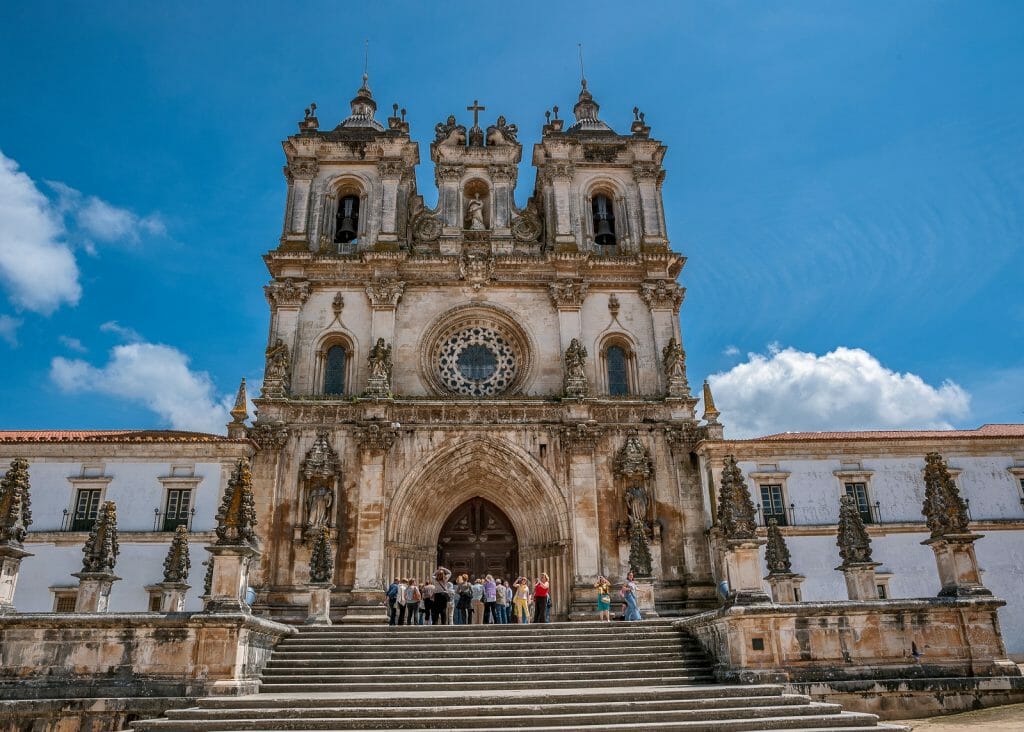
After visiting the Monastery, we strongly suggest you have a snack in Alcoa pastry shop. It’s possibly one of the best places in the country to try some of the best Portuguese sweets and pastries, particularly conventual pastries!
Finally, go to Nazare, a small, whitewashed beach town. Nazare is a famous world-famous for having the world’s biggest waves (only in winter), but it’s also a nice beach destination with beautiful sunsets.
Day 6 Sintra
After a very long day yesterday, today we will “only” go to Sintra and spend the night there. After such a long day yesterday, this may look like a day with little to do, but Sintra has quite a few things that need to be seen.
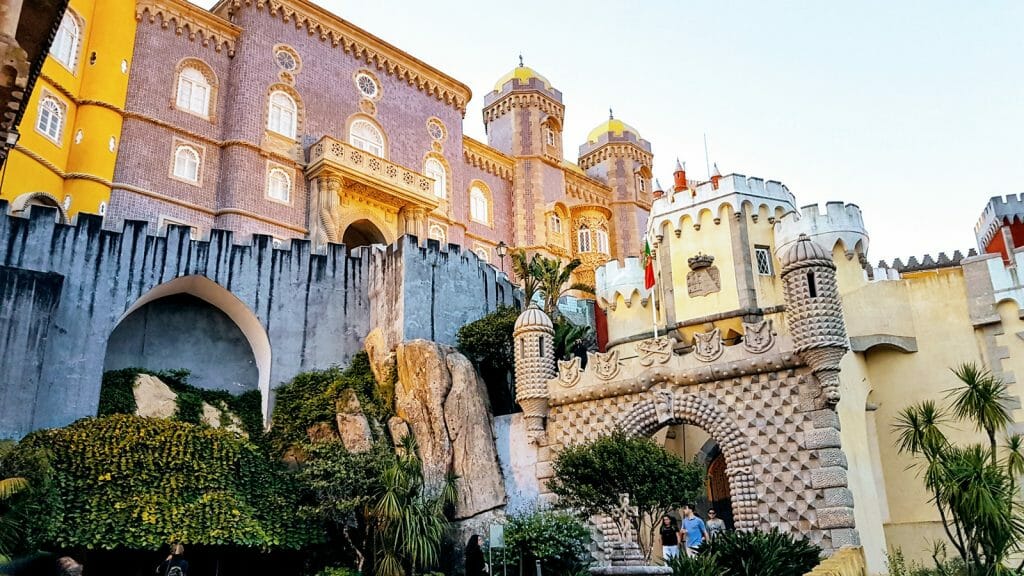
Palácio da Pena is obviously the most notorious attraction with its colorful and romantic architecture. Built on the top of a hill it offers wonderful views and it’s been considered one of the world’s most magnificent palaces several times. However, there are many other attractions like the 12th-century Moors Castle, Quinta da Regaleira (with the famous inverted tower), and Monserrate Palace.
Day 7 Arrabida
After visiting the wonderland of palaces, castles, and manor houses that is Sintra we continue heading south to Algarve, but we have to take the opportunity and visit Alentejo.
First, we will stop in Serra da Arrabida – one of the most beautiful natural spots in the country but also the home of the most beautiful beaches in Portugal, Portinho da Arrabida, Sesimbra, and Galapos. The water isn’t as warm as in Algarve but in terms of beauty, they are as good as it gets. Serra da Arrábida is also a great place to hike. There are several trails, with very different levels of difficulty.

From Arrábida we head to Evora, the main city in Alentejo where you’ll spend the night.
Day 8 Evora
Besides being the biggest city in Alentejo, Evora is also a living museum and a world heritage site. The most notorious attraction in Evora is the bones chapel. With the bones of 5000 monks covering the interior of the chapel, this is probably the most bizarre attraction in this itinerary.
However, there’s so much more to see and do in Evora. Giraldo Square, the Vauban style walls, the typical whitewashed houses, the Cathedral, and the Roman temple are some of the other things you shouldn’t miss. We also suggest you take the opportunity to try some of the local food, as dishes in Alentejo are very different from the typical Portuguese food.
Finally, we need to head to our destination: Algarve!
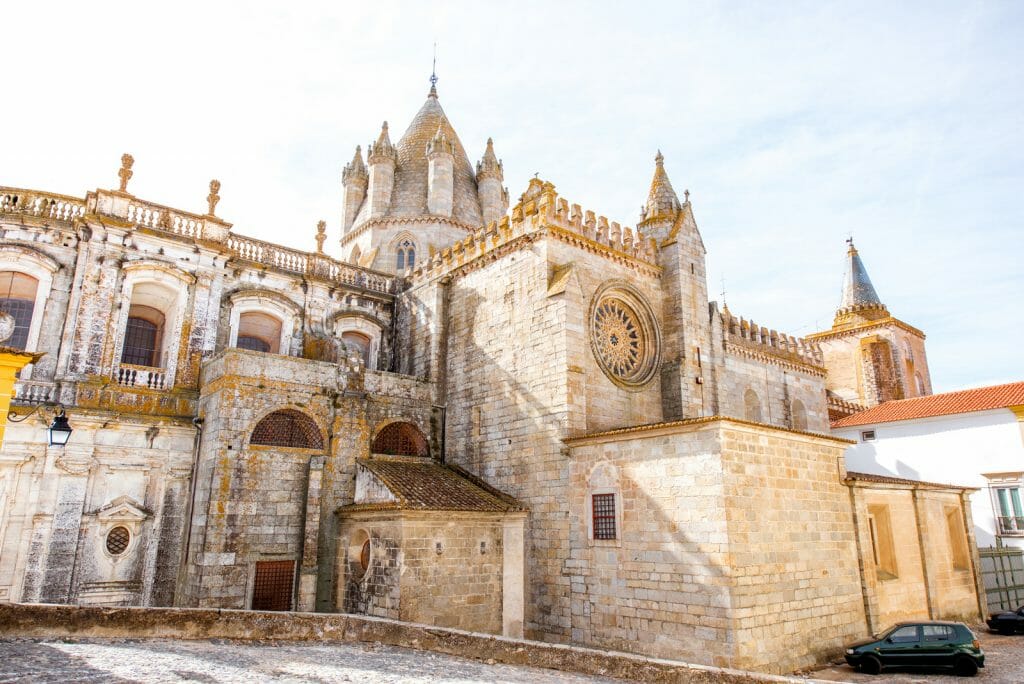
Day 9 Algarve
The two final days of this Portugal itinerary will be spent in Algarve. We suggest you set up a base in Lagos, as it’s perfectly located for several day trips and it has some great sandy beaches and turquoise waters too.
On the first day in Algarve, we suggest you go to Carvoeiro, take a Benagil Cave tour and Marinha Beach. These are maybe the most famous attractions in Algarve, and you can’t really miss them. Don’t forget to take a walk on the Carvoeiro boardwalk. It’s really beautiful.
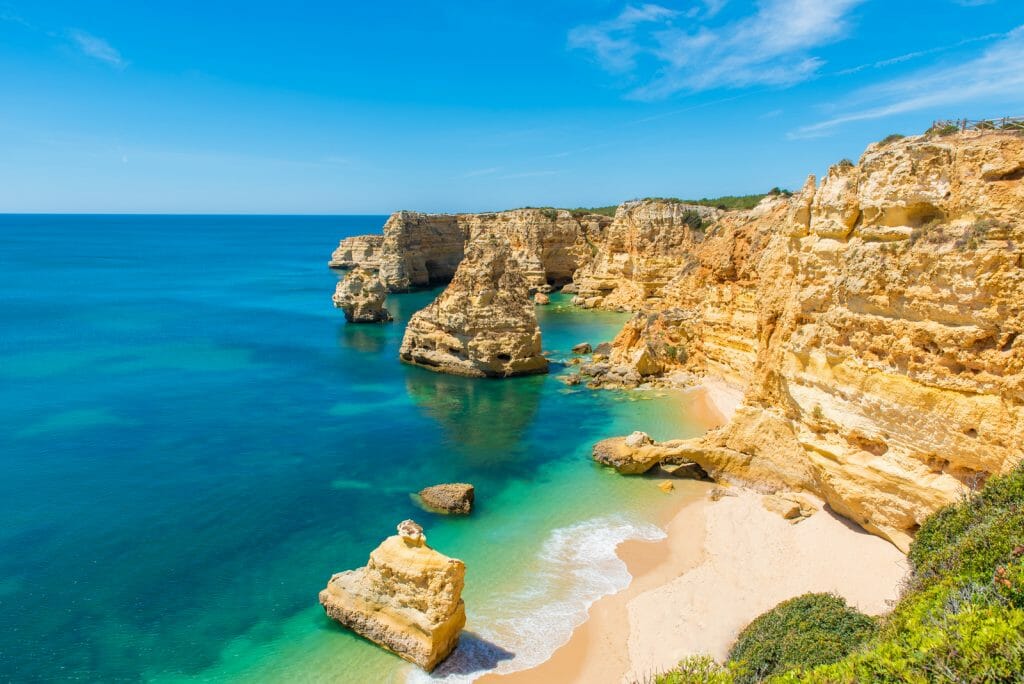
On the way back to Lagos, you should stop in Alvor, a small (but touristy) town with a nice beach and another beautiful boardwalk.
Day 10 Algarve
On the final day, we suggest you go to Ponta da Piedade and Praia Dona Ana, two of the best attractions close to Lagos.
Finally, you should head west and visit Sagres and Cape S. Vicente, Europe’s southwestern-most point. It’s a region wild, barren, and dramatic cliffs that will make your final day unforgettable. In Sagres, you should also visit the fort which was built to control and defend the Portuguese coast. This west region of Algarve also has some less touristy, hidden beaches which are great to relax on the last day of any trip!
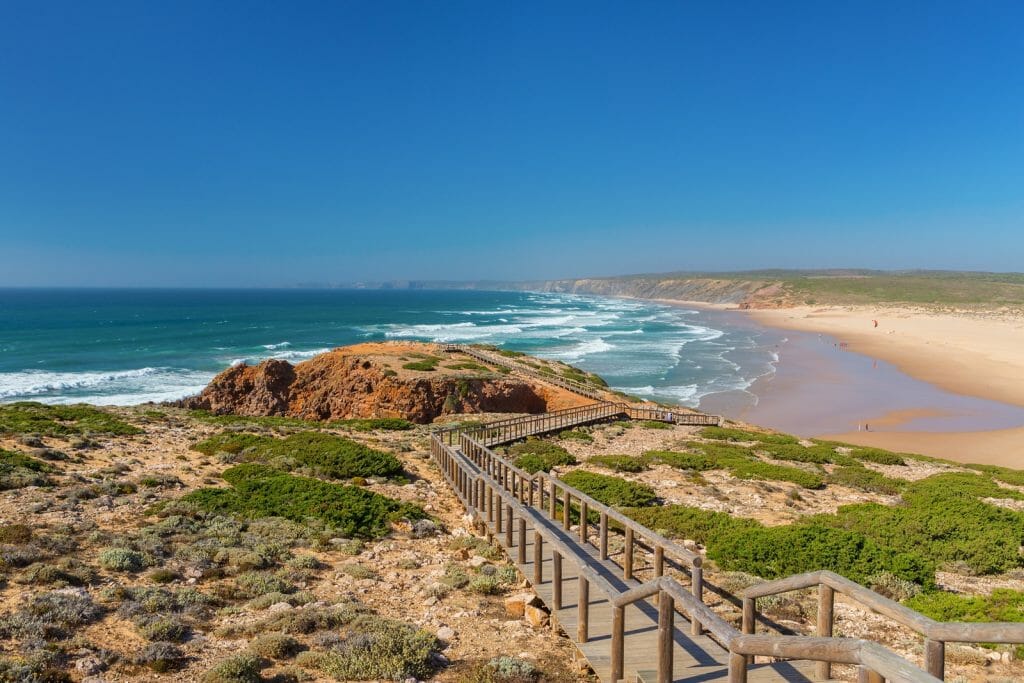
Do you have more time in Portugal?
As we said in the beginning, in 10 days in Portugal you can visit the most famous attractions and learn a little about history and heritage. However, you won’t be able to visit many lesser-known destinations and even some of the most popular ones on your 10 Days in Portugal itinerary. If you have more time, you should think about including:
The world heritage town of Elvas in Alentejo. It’s a perfect day trip from Evora and one of the most fortified towns in the world.
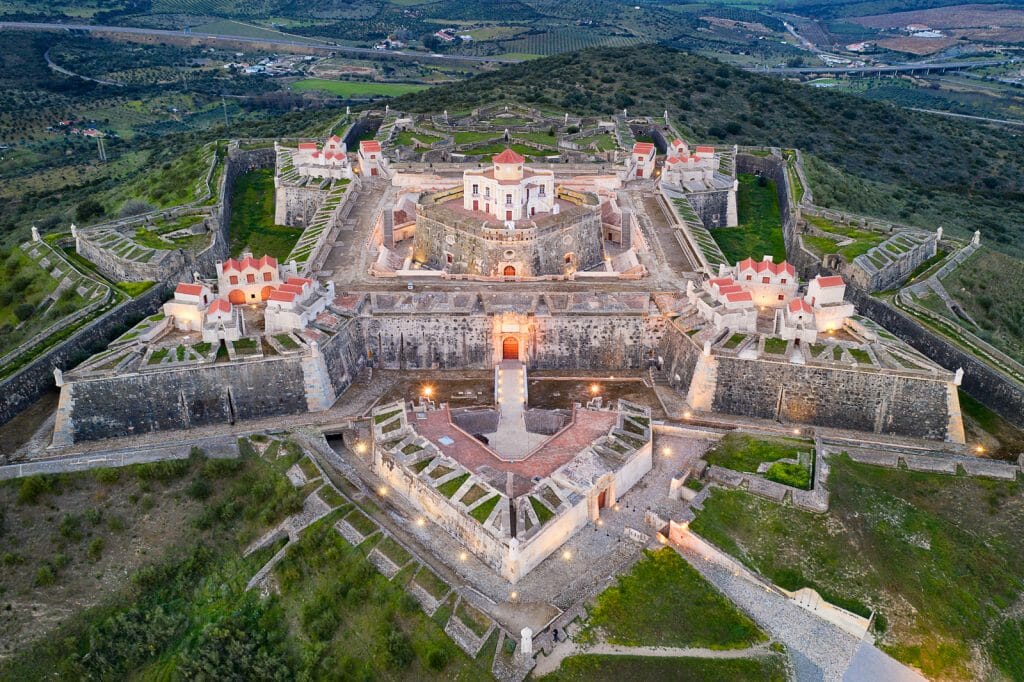
Guimarães – Located in northern Portugal it’s the birth of the nation and has one of the most charming city centers in the country.
The Coa Valley – has some of the most important Prehistoric art sites in World, the Coa Valley.
The world heritage sites of Mafra and Batalha if you are into history, heritage, and architecture.
Finally, we are not even mentioning Azores and Madeira, but those are worth a trip by themselves.
This 10 Day Portugal Itinerary was written by Jorge and Claudia from Portugal Things. They are travel bloggers from Portugal and they love exploring and talk about their own country. In Portugal Things the explore the history, culture, food, and the best destinations in Portugal. Follow them on their Portugal Facebook Page, Pinterest, and their world travel Facebook page.
Portugal Itinerary – Pin for Later:
